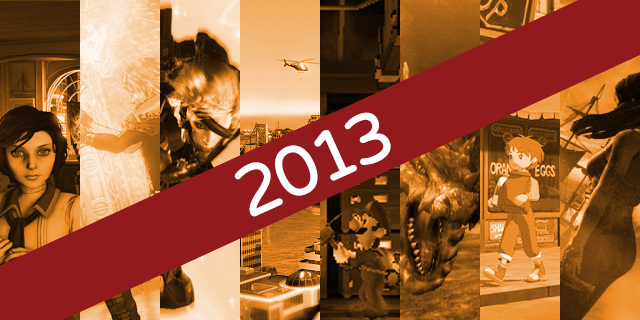
While the industry divides the year into quarters, we realize that there are really three parts to the year: the (at least usually) barren early months, the gimmicky, convention-filled summer and the action-packed holiday season. This time, we look at January through April.
Biggest Surprise
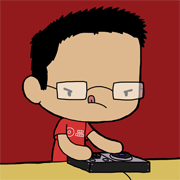 Eric Albuen: I wasn’t really into the series before this game, but simply playing Fire Emblem: Awakening alone has made me want to go back to the previous ones to see what they were all about. Casual Mode probably had to be the best addition to the series, simply because it helped ease a lot of new players (such as myself) into the game, as well as enjoy the story without much worry. I’ve pretty much loved every minute.
Eric Albuen: I wasn’t really into the series before this game, but simply playing Fire Emblem: Awakening alone has made me want to go back to the previous ones to see what they were all about. Casual Mode probably had to be the best addition to the series, simply because it helped ease a lot of new players (such as myself) into the game, as well as enjoy the story without much worry. I’ve pretty much loved every minute.
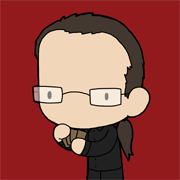 Chris Ingersoll: This certainly has been an eventful first third of the year as far as jaw-dropping announcements have been concerned. DuckTales Remastered, Shin Megami Tensei X Fire Emblem, EarthBound finally coming to Virtual Console, corporate troubles at the top of two of the industry’s biggest companies… the list goes on. Of those, however, I’m going to choose the announcement of a Xenoblade Chronicles successor (can’t call it a “sequel” until we know more about it). Considering all of the hoops that needed to be jumped through for Xenoblade (and other Wii RPGs) to arrive in the US, I hope that giving us evidence of this new title so early is an indication of NoA’s position on console RPGs where the Wii U is concerned.
Chris Ingersoll: This certainly has been an eventful first third of the year as far as jaw-dropping announcements have been concerned. DuckTales Remastered, Shin Megami Tensei X Fire Emblem, EarthBound finally coming to Virtual Console, corporate troubles at the top of two of the industry’s biggest companies… the list goes on. Of those, however, I’m going to choose the announcement of a Xenoblade Chronicles successor (can’t call it a “sequel” until we know more about it). Considering all of the hoops that needed to be jumped through for Xenoblade (and other Wii RPGs) to arrive in the US, I hope that giving us evidence of this new title so early is an indication of NoA’s position on console RPGs where the Wii U is concerned.
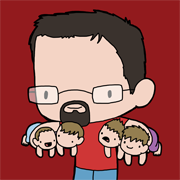 Justin Last: I never thought I would see the day when a Gears of War game was better in campaign than in multiplayer. Don’t get me wrong; I love campaign mode. It’s great to have a friend over and chainsaw Locust together. But inevitably we finish the campaign once and then move on to Horde and competitive multiplayer. In Gears of War 3, we spent a lot of time in Beast mode as well. In Gears of War: Judgment, most of our time was spent turning on mutators in campaign and going for high scores. Multiplayer feels lacking, due to a low number of maps and a removal of Horde mode altogether. I have no idea how People Can Fly thought removing Horde mode and shipping a game with only four multiplayer maps was a good idea.
Justin Last: I never thought I would see the day when a Gears of War game was better in campaign than in multiplayer. Don’t get me wrong; I love campaign mode. It’s great to have a friend over and chainsaw Locust together. But inevitably we finish the campaign once and then move on to Horde and competitive multiplayer. In Gears of War 3, we spent a lot of time in Beast mode as well. In Gears of War: Judgment, most of our time was spent turning on mutators in campaign and going for high scores. Multiplayer feels lacking, due to a low number of maps and a removal of Horde mode altogether. I have no idea how People Can Fly thought removing Horde mode and shipping a game with only four multiplayer maps was a good idea.
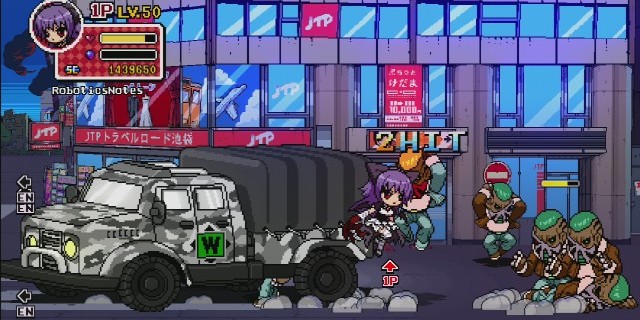
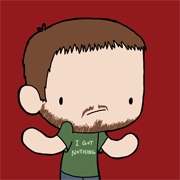 Andrew Passafiume: I’m not big on playing iOS games despite owning an iPhone, and yet everything I heard about Simogo’s Year Walk made it sound like a must-play. Best of all, it was even better than I could have hoped, delivering a completely terrifying tale in one of the cooler point-and-click puzzle games I’ve played in a while. It’s not particularly long, but it is a game that will stick with you for weeks after you finish it. I wouldn’t be surprised if this made my top ten list at the end of the year!
Andrew Passafiume: I’m not big on playing iOS games despite owning an iPhone, and yet everything I heard about Simogo’s Year Walk made it sound like a must-play. Best of all, it was even better than I could have hoped, delivering a completely terrifying tale in one of the cooler point-and-click puzzle games I’ve played in a while. It’s not particularly long, but it is a game that will stick with you for weeks after you finish it. I wouldn’t be surprised if this made my top ten list at the end of the year!
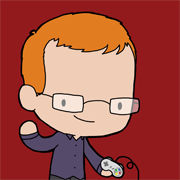 Graham Russell: Where the heck did Phantom Breaker: Battle Grounds come from? Mages’ XBLA beat-’em-up, the spinoff of a fighter we may never get in the West, stands on its own just fine, delivering on its premise in ways that Scott Pilgrim vs. the World and Guardian Heroes HD didn’t quite accomplish.
Graham Russell: Where the heck did Phantom Breaker: Battle Grounds come from? Mages’ XBLA beat-’em-up, the spinoff of a fighter we may never get in the West, stands on its own just fine, delivering on its premise in ways that Scott Pilgrim vs. the World and Guardian Heroes HD didn’t quite accomplish.
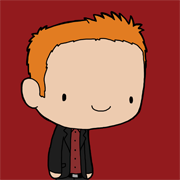 Henry Skey: I don’t know what’s going on with Square Enix and its insane expectations. Its recent games have been a disaster (don’t get me started on FFXIII, I actually loved that one), but its publishing projections leave me puzzled. Tomb Raider, for example, has sold close to four million copies worldwide. Awesome. But apparently no, that’s not awesome enough for Square Enix. I’m not sure what surprises me more, the fact that it’s not happy with the current sales, or that it used Metacritic scores as a measuring stick of how well the game will sell.
Henry Skey: I don’t know what’s going on with Square Enix and its insane expectations. Its recent games have been a disaster (don’t get me started on FFXIII, I actually loved that one), but its publishing projections leave me puzzled. Tomb Raider, for example, has sold close to four million copies worldwide. Awesome. But apparently no, that’s not awesome enough for Square Enix. I’m not sure what surprises me more, the fact that it’s not happy with the current sales, or that it used Metacritic scores as a measuring stick of how well the game will sell.
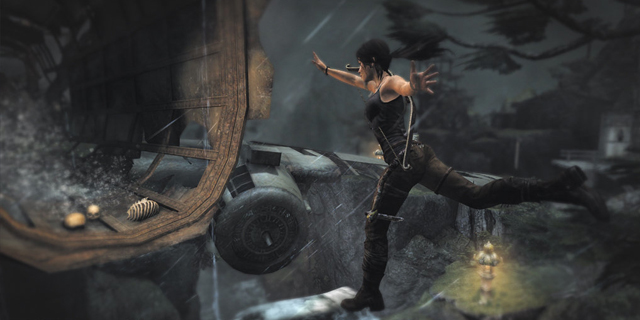
 Shawn Vermette: While many people were less than thrilled with Sony’s PlayStation 4 reveal, it made me very excited by the possibilities outlined. We’re at a point in hardware capability that the upcoming generations of consoles will not be defined by the graphical leaps, but by the new features that mark each step. I don’t know if Sony can or will pull off all of its plans for all these new social features, but if Sony can come close, I’ll be glad to make the PS4 my primary console for the next generation.
Shawn Vermette: While many people were less than thrilled with Sony’s PlayStation 4 reveal, it made me very excited by the possibilities outlined. We’re at a point in hardware capability that the upcoming generations of consoles will not be defined by the graphical leaps, but by the new features that mark each step. I don’t know if Sony can or will pull off all of its plans for all these new social features, but if Sony can come close, I’ll be glad to make the PS4 my primary console for the next generation.
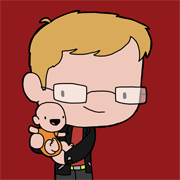 Lucas White: Thanks to some super-abysmal PR, Crystal Dynamics’ Tomb Raider reboot looked like it might be fun to play but otherwise drowned in weird, misogynistic, fetishistic violence. I (and many others) missed Rhianna Pratchett, the game’s writer, speaking up and assuring that that wasn’t the case and was ready to ignore the game outright. However, something told me to check it out anyway, and I’m glad I did. Tomb Raider is great. It is so mechanically sound that it blows genre-buddy Uncharted out of its own water, and that’s fine. What makes Tomb Raider so important, though, is how progressive it is. This iteration of Lara Croft is the most realistic, human, and empowering female character since, well, ever.
Lucas White: Thanks to some super-abysmal PR, Crystal Dynamics’ Tomb Raider reboot looked like it might be fun to play but otherwise drowned in weird, misogynistic, fetishistic violence. I (and many others) missed Rhianna Pratchett, the game’s writer, speaking up and assuring that that wasn’t the case and was ready to ignore the game outright. However, something told me to check it out anyway, and I’m glad I did. Tomb Raider is great. It is so mechanically sound that it blows genre-buddy Uncharted out of its own water, and that’s fine. What makes Tomb Raider so important, though, is how progressive it is. This iteration of Lara Croft is the most realistic, human, and empowering female character since, well, ever.
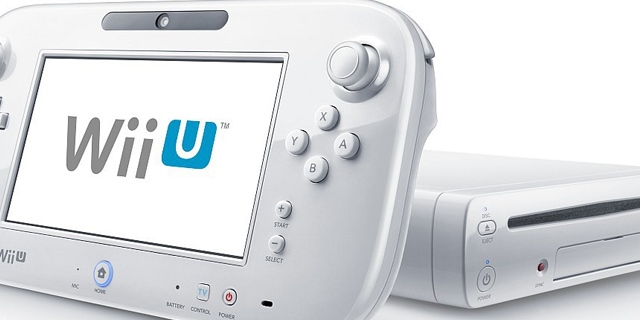
Biggest Disappointment
 I love Double Fine and Ron Gilbert, but not every game they release is a winner. The Cave, Ron Gilbert’s first game after the mediocre DeathSpank series, is a title with a lot of potential. Seven interesting characters, each with their own special abilities? A large world with plenty of seemingly well-designed puzzles? Small stories that flesh out the world and these unique personalities as you explore? Unfortunately, the puzzles aren’t particularly well-designed, the writing is generally unfunny, and having to replay certain sections of the game just to see the other character’s endings can become tiresome.
I love Double Fine and Ron Gilbert, but not every game they release is a winner. The Cave, Ron Gilbert’s first game after the mediocre DeathSpank series, is a title with a lot of potential. Seven interesting characters, each with their own special abilities? A large world with plenty of seemingly well-designed puzzles? Small stories that flesh out the world and these unique personalities as you explore? Unfortunately, the puzzles aren’t particularly well-designed, the writing is generally unfunny, and having to replay certain sections of the game just to see the other character’s endings can become tiresome.
 The sparse release line-up for the Wii U since launch has been horrid. The excuses being used for games not appearing on it have been equally weak, from not wanting to make a half-hearted use of the system’s unique interface (which is completely optional) to poorly-explained delays, both third-party and from Nintendo’s own studios. Ever since the DS, Nintendo’s unique consoles have gone through awkward initial phases where everyone had to take a year or so before anything of value arrived on them. For some reason, possibly the fact that the Wii U is as mainstream a machine (despite the GamePad) as Nintendo has released in over a decade, this time around the lag feels more suspicious than the others.
The sparse release line-up for the Wii U since launch has been horrid. The excuses being used for games not appearing on it have been equally weak, from not wanting to make a half-hearted use of the system’s unique interface (which is completely optional) to poorly-explained delays, both third-party and from Nintendo’s own studios. Ever since the DS, Nintendo’s unique consoles have gone through awkward initial phases where everyone had to take a year or so before anything of value arrived on them. For some reason, possibly the fact that the Wii U is as mainstream a machine (despite the GamePad) as Nintendo has released in over a decade, this time around the lag feels more suspicious than the others.
 The end of the DS and Wii era. They will be missed. Nintendo seems to get a bad rap about the quality of things it releases, and whether or not they could stand up against the more powerful systems of that generation. If anything, Nintendo has proven it has what it takes to stay alive in this industry. Without the Wii, motion gaming wouldn’t have set off like it did. It also brought a whole new crowd to play video games, even if it was extremely casual. It proved it could appeal to the wider picture. The DS also made a name for itself. Many thought that Sony was going to take the handheld title away from Nintendo with its powerful PSP. The DS managed to not only crush it this generation, but it also managed to influence the greater gaming scene.
The end of the DS and Wii era. They will be missed. Nintendo seems to get a bad rap about the quality of things it releases, and whether or not they could stand up against the more powerful systems of that generation. If anything, Nintendo has proven it has what it takes to stay alive in this industry. Without the Wii, motion gaming wouldn’t have set off like it did. It also brought a whole new crowd to play video games, even if it was extremely casual. It proved it could appeal to the wider picture. The DS also made a name for itself. Many thought that Sony was going to take the handheld title away from Nintendo with its powerful PSP. The DS managed to not only crush it this generation, but it also managed to influence the greater gaming scene.
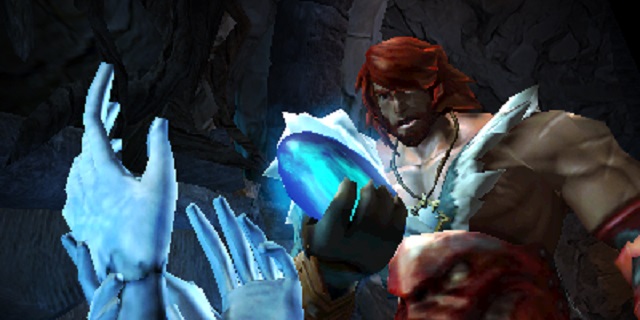
 After the great run of DS titles, I held out hope for Castlevania: Lords of Shadow: Mirror of Fate. Even with the change of developers, it would still have some of the same magic, right? Not so much. It’s not horrible by any means, but the jarring elements and focus on combo-based attacks just took it in a way that didn’t really make sense for the series.
After the great run of DS titles, I held out hope for Castlevania: Lords of Shadow: Mirror of Fate. Even with the change of developers, it would still have some of the same magic, right? Not so much. It’s not horrible by any means, but the jarring elements and focus on combo-based attacks just took it in a way that didn’t really make sense for the series.
 Unquestionably, it’s SimCity. I can handle the always-online DRM. I can handle the server integration. I can handle the launch debacle. What I can’t handle is a combination of all that and the ludicrously small city size. It’s just too much. It hurts. I seriously hope the franchise isn’t irreparably damaged, but if that’s the case, there’s certainly room for a competitor to swoop in and save the day. I can see a Torchlight/Diablo scenario happening in the future.
Unquestionably, it’s SimCity. I can handle the always-online DRM. I can handle the server integration. I can handle the launch debacle. What I can’t handle is a combination of all that and the ludicrously small city size. It’s just too much. It hurts. I seriously hope the franchise isn’t irreparably damaged, but if that’s the case, there’s certainly room for a competitor to swoop in and save the day. I can see a Torchlight/Diablo scenario happening in the future.
 I like rhythm games. I like platformers. I like when rhythm games and platformers combine into things like Bit.Trip Presents Runner2: Future Legend of Rhythm Alien. It makes me very sad that HarmoKnight did not resonate with me. I wanted to like it. The aesthetic is nice, the concept appeals to me and trading out for characters with different play styles sounds great, but I just wasn’t having fun when I played it, and I am still not sure why.
I like rhythm games. I like platformers. I like when rhythm games and platformers combine into things like Bit.Trip Presents Runner2: Future Legend of Rhythm Alien. It makes me very sad that HarmoKnight did not resonate with me. I wanted to like it. The aesthetic is nice, the concept appeals to me and trading out for characters with different play styles sounds great, but I just wasn’t having fun when I played it, and I am still not sure why.
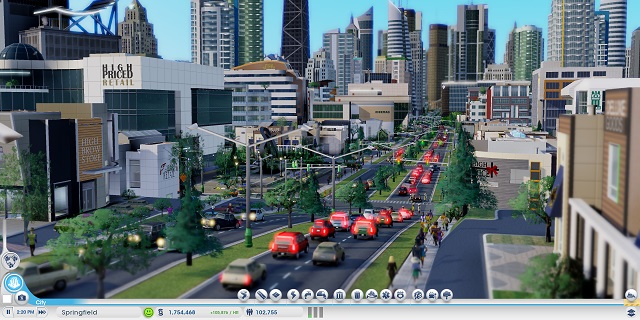
 I love Fist of the North Star, and I love Dynasty Warriors (king of all guilty pleasures), so Ken’s Rage was a natural fit for me. It didn’t hurt that Ken’s Rage changed the formula up in ways that made the franchise feel fresh in many ways for the first time in years. Ken’s Rage 2 took everything that drew fans in in the first place and tossed it all out the window. Combat nonsensically changed from an interesting take on the classic brawler to an awkward, braindead (even by DW standards) mashfest.
I love Fist of the North Star, and I love Dynasty Warriors (king of all guilty pleasures), so Ken’s Rage was a natural fit for me. It didn’t hurt that Ken’s Rage changed the formula up in ways that made the franchise feel fresh in many ways for the first time in years. Ken’s Rage 2 took everything that drew fans in in the first place and tossed it all out the window. Combat nonsensically changed from an interesting take on the classic brawler to an awkward, braindead (even by DW standards) mashfest.
 The dearth of Wii U titles. A system launch isn’t a system launch unless it has a lack of compelling titles in the ensuing months, but the Wii U is a special case, as there were a half-dozen big, interesting games scheduled to release in the months following its release. However, only two of them actually released as scheduled. The rest were delayed until much later this year. As a result, I’ve only had occasion to use my Wii U a handful of times in the last few months.
The dearth of Wii U titles. A system launch isn’t a system launch unless it has a lack of compelling titles in the ensuing months, but the Wii U is a special case, as there were a half-dozen big, interesting games scheduled to release in the months following its release. However, only two of them actually released as scheduled. The rest were delayed until much later this year. As a result, I’ve only had occasion to use my Wii U a handful of times in the last few months.
Game of Part One
 I usually evaluate my Game of the Year by the amount of time I spend playing them. If the clock on my Monster Hunter 3 Ultimate save file is any indication, it is going to be standing on top of a pile of harvested corpses, roaring triumphantly, when December comes around. It helps that I can play it both at home on the Wii U and on the go on 3DS, thanks to the save transfer utility.
I usually evaluate my Game of the Year by the amount of time I spend playing them. If the clock on my Monster Hunter 3 Ultimate save file is any indication, it is going to be standing on top of a pile of harvested corpses, roaring triumphantly, when December comes around. It helps that I can play it both at home on the Wii U and on the go on 3DS, thanks to the save transfer utility.
 I am not used to this being a difficult decision. Typically the first part of the year is not chock full of games that I love, but here we are with The Cave, Sly Cooper: Thieves in Time, BioShock Infinite, Runner2 and Luigi’s Mansion: Dark Moon. I love all of these games, but whenever I play Luigi’s Mansion: Dark Moon, I have a big smile on my face. The puzzle elements are great, and the whole thing just oozes charm. Dark Moon is the first 3DS full release I’ve ever downloaded, and I can’t think of a better title to have with me all of the time.
I am not used to this being a difficult decision. Typically the first part of the year is not chock full of games that I love, but here we are with The Cave, Sly Cooper: Thieves in Time, BioShock Infinite, Runner2 and Luigi’s Mansion: Dark Moon. I love all of these games, but whenever I play Luigi’s Mansion: Dark Moon, I have a big smile on my face. The puzzle elements are great, and the whole thing just oozes charm. Dark Moon is the first 3DS full release I’ve ever downloaded, and I can’t think of a better title to have with me all of the time.
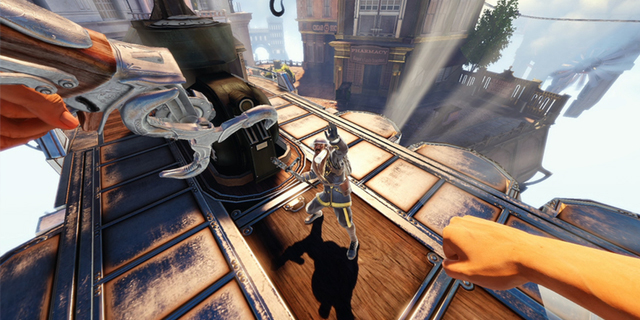
 As a fan of the series, I knew that Fire Emblem: Awakening would be a personal highlight for the year. What I didn’t expect, though, was the level to which everything, from the heredity mechanics to the superb 8-4 localization, would be executed so compellingly. It’s a great first Fire Emblem game, so if you haven’t played one before, jump in. Now. You won’t regret it, unless you planned on being productive for the rest of the year.
As a fan of the series, I knew that Fire Emblem: Awakening would be a personal highlight for the year. What I didn’t expect, though, was the level to which everything, from the heredity mechanics to the superb 8-4 localization, would be executed so compellingly. It’s a great first Fire Emblem game, so if you haven’t played one before, jump in. Now. You won’t regret it, unless you planned on being productive for the rest of the year.
 Do I even need to say it? BioShock Infinite is one of those games that I will be talking about for years to come. It combines a heady, science fiction story, excellent historical themes and combat that satisfying and full of variety. And yeah, I’m still thinking about that ending. The original BioShock is a personal favorite of mine, but Infinite manages to surpass it in almost every way imaginable. Don’t be surprised to see this at the top of my list at the end of the year; it’s one of those games I know I’ll never forget.
Do I even need to say it? BioShock Infinite is one of those games that I will be talking about for years to come. It combines a heady, science fiction story, excellent historical themes and combat that satisfying and full of variety. And yeah, I’m still thinking about that ending. The original BioShock is a personal favorite of mine, but Infinite manages to surpass it in almost every way imaginable. Don’t be surprised to see this at the top of my list at the end of the year; it’s one of those games I know I’ll never forget.
 Despite my love of tactics games and RPGs, I’ve never been able to get into the Fire Emblem series due to its high difficulty. It was never the permadeath that put me off, though I always regrettably lost someone I really liked, rather it was the fact that I inevitably hit a wall where everyone on my team was vastly underleveled and could not push through without losing most of my units. Fire Emblem: Awakening cuts through that with a great way of playing extra missions for experience and a mode that removes permadeath. Combined, this let me rarely feel like I was completely outmatched, but when I was, I was able to push through and make progress without it being a Pyrrhic victory. Great writing and characters took it from enjoyable strategy game to unforgettable experience that I look forward to playing again.
Despite my love of tactics games and RPGs, I’ve never been able to get into the Fire Emblem series due to its high difficulty. It was never the permadeath that put me off, though I always regrettably lost someone I really liked, rather it was the fact that I inevitably hit a wall where everyone on my team was vastly underleveled and could not push through without losing most of my units. Fire Emblem: Awakening cuts through that with a great way of playing extra missions for experience and a mode that removes permadeath. Combined, this let me rarely feel like I was completely outmatched, but when I was, I was able to push through and make progress without it being a Pyrrhic victory. Great writing and characters took it from enjoyable strategy game to unforgettable experience that I look forward to playing again.
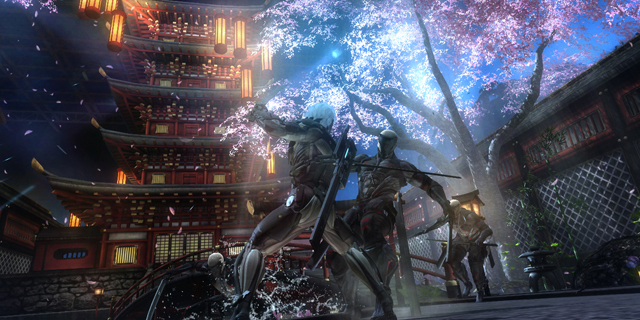
 Easily, it’s Fire Emblem: Awakening. The colorful cast of characters and the superb writing really set this game apart from the other ones in the series. While it still carries the serious tone of the other games, it introduces a whimsical, light-hearted side to the series that we haven’t really seen. With the DLC still pouring out, I can still see myself playing this into the summer. Of course, it’s not gonna stop me from from trying to beat Path of Radiance or Shadow Dragon.
Easily, it’s Fire Emblem: Awakening. The colorful cast of characters and the superb writing really set this game apart from the other ones in the series. While it still carries the serious tone of the other games, it introduces a whimsical, light-hearted side to the series that we haven’t really seen. With the DLC still pouring out, I can still see myself playing this into the summer. Of course, it’s not gonna stop me from from trying to beat Path of Radiance or Shadow Dragon.
 Ni No Kuni, but after a long unwinding session, I can safely say that it won’t be my Game of the Year. Nobody can deny how incredible the aesthetic is. Controlling a live-action Ghibli movie is astounding and never gets old. Voice acting is excellent, as are the worlds and the plot is serviceable. The lack of a good ending (well really, any kind of ending) is unforgivable to me, though, and the overall gameplay is nowhere near as polished as the graphics or soundtrack. Still: well worth playing.
Ni No Kuni, but after a long unwinding session, I can safely say that it won’t be my Game of the Year. Nobody can deny how incredible the aesthetic is. Controlling a live-action Ghibli movie is astounding and never gets old. Voice acting is excellent, as are the worlds and the plot is serviceable. The lack of a good ending (well really, any kind of ending) is unforgivable to me, though, and the overall gameplay is nowhere near as polished as the graphics or soundtrack. Still: well worth playing.
 2013 has already been a fantastic year for games. That said, no other game spoke to me so perfectly on so many levels like Metal Gear Rising: Revengeance did. Hideki Kamiya took Metal Gear, a series known for slow, tactical action gameplay and painfully long but amusingly nonsensical exposition, and turned it into the most ridiculously over-the-top action game since No More Heroes. Not only is it crazy in the best of ways, it also houses some of the most elegantly simple combat mechanics in genre history. Everything is streamlined to the point of cutting (heh) out unnecessary flashiness while simultaneously having you running across missiles to slash a helicopter into a million pieces.
2013 has already been a fantastic year for games. That said, no other game spoke to me so perfectly on so many levels like Metal Gear Rising: Revengeance did. Hideki Kamiya took Metal Gear, a series known for slow, tactical action gameplay and painfully long but amusingly nonsensical exposition, and turned it into the most ridiculously over-the-top action game since No More Heroes. Not only is it crazy in the best of ways, it also houses some of the most elegantly simple combat mechanics in genre history. Everything is streamlined to the point of cutting (heh) out unnecessary flashiness while simultaneously having you running across missiles to slash a helicopter into a million pieces.



















